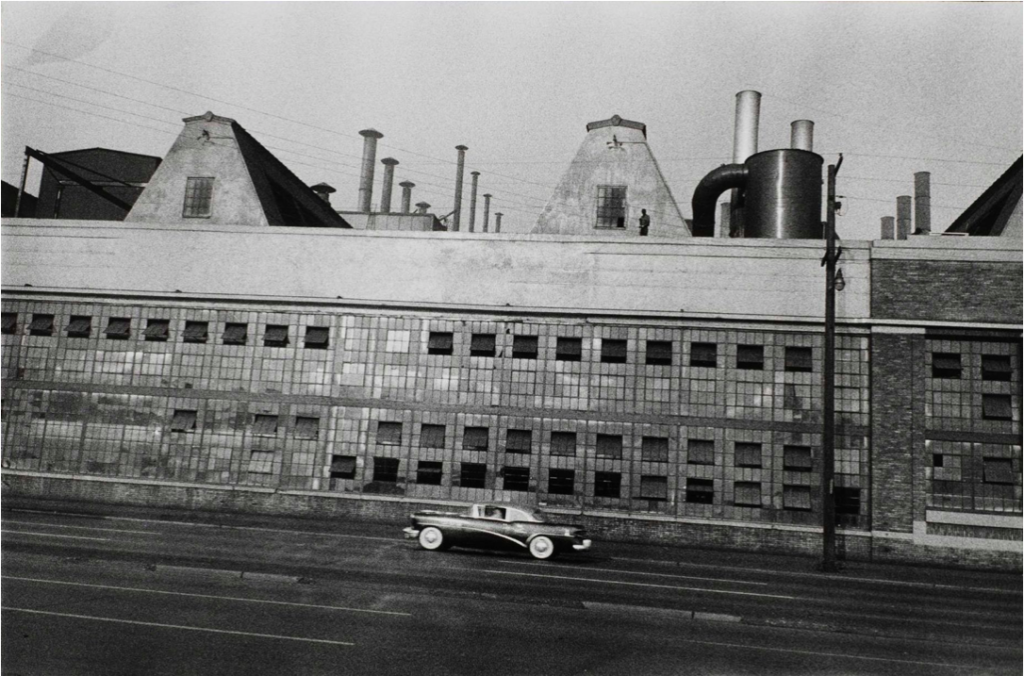Diane Arbus’s A Child Crying and Robert Frank’s Detroit River Rouge Plant are two different examples of depths of field. The photo on the left, Arbus’s A Child Crying, is an example of a short depth of field image. The child’s face is clear and is at the forefront of the picture while the background is blurry, bringing focus to the child’s face. We can clearly see the tears rolling down the child’s face and see the textures in the child’s sweater with great detail in this greyscale photo. While the child’s hair blowing in the wind is wispy and blurry, the child’s eyebrows are distinct and we can see each eyebrow hair on the right side of the child’s face. We can even see the crystal-like tears welling up in the child’s eyes, which gives the impression that the child is really upset or emotionally distressed. This short depth of field photo’s details to the child’s face and tears evokes emotions of pity and sympathy for the viewer.
The photo on the right, Frank’s Detroit River Rouge Plant, is an example of a long depth of field image. Each panel and window in the factory behind the car can be seen in great detail, while the details of the car are less apparent. The viewer’s eyes do not fixate on the car in the foreground but rather focuses on the whole image and specifically on the details of the factory in the background. The top of the photo has a lot of detail as well. We can see the chimneys and roof on the top as well as the electrical lines that go across the factory that is attached to the electric poles. While the roads and the traffic lanes on the roads at the bottom of the image are also clear, my attention is specifically drawn towards the details of the factory, which I believe is the photographer’s attention as the photo’s title is about the factory and not about the car in front of it.



A long depth of field is a deeper range of objects in focus from foreground to background. In comparison to the Arbus example, Frank’s is deeper, I agree. Good descriptions of details particularly in A Child Crying.